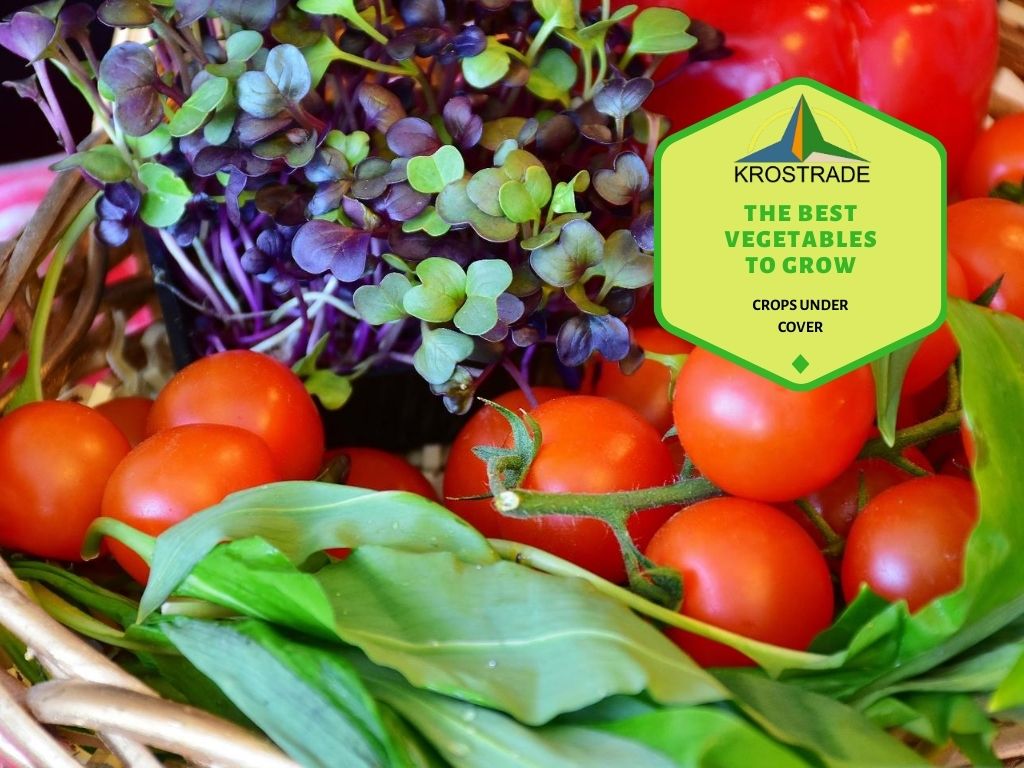Green beans, peppers, kale, and squash are some of the best vegetables to grow in California. California is best known for its warm, sunny climate, the easy-going culture, and the glitz and glamour of Hollywood. But other than that, it’s also one of the best places to live in, especially if you’re into gardening.
Thanks to its beautiful sunny weather, it’s easy for homeowners to plant vegetables, herbs, and flowers in their backyards. If you’re planning on growing vegetables in your home, here are some of the best vegetables to grow in California.

Types of Vegetables that Grow Best in Southern California
Before you start planting, you need to know to be familiar with the plant’s hardiness zone. By finding out your hardiness zone, you’ll know which plants grow well in your area. Southern California belongs to plant hardiness zones 8b to 11. In these zones, the temperature varies from 15 to 40 degrees Fahrenheit.
Since Southern California has mild winters, you can easily grow vegetables all year round. Cool-weather crops like kale, collards, broccoli, lettuce, and more can easily be grown throughout the winter season.
Here are some of the best vegetables you can plant during spring and fall.
Planting vegetables during spring
In Southern California, spring season planting can be an extension of cool-temperature vegetables. Some of the vegetables you can plant during this season include lettuce, spinach, radishes, chard, carrots, and kale.
You can also plant tomatoes when the weather warms and the soil’s temperature rises. Most tomatoes germinate within a few days to a week and you can harvest them after two to three months. Some of the tomato heirloom varieties you can plant include Armenian, Green Zebra, German Queen, and Brandywine.
It’s also a great time to plant peppers. You can plant them in spring and they’ll be ready for harvest in the middle of summer.
Planting vegetable during fall
During the fall season, you can plant radishes each week from September to March. Radishes are fast-growing, so they’ll be ready to eat after a month and a half. Fall is the best time to plant onions as well.
For year-round crops, you can try planting carrots every 30 to 60 days. Planting winter greens like kale, collards, and chard during early fall lets you harvest them in time for Thanksgiving.
Seeds germinate slower in mild winter temperatures, but you can still plant them. Mustard, chard, spinach, and other greens can be planted successively. For beets, you can plant them during these times and harvest them by March.
Types of Vegetables You Can Plant in April to Reap a Summer Harvest
April is the perfect time to plant vegetable seedlings because you’ll be able to harvest it just in time for summer. You can plant carrots, lettuce, beets, corn, pumpkins, cucumbers, squash, and herbs and harvest the product during summer and fall.
Other than the vegetables listed above, you can also plant green beans, peppers, asparagus, kale, peas, onion, tomatoes, Swiss chard, zucchini, spinach, and radishes. Here are some of the tips you need to remember when planting in Southern California:
Crop rotation
Since farmers adopt this method, there’s no reason why you shouldn’t. Rotating crops not only keep your soil healthy, but it also maximizes plant growth. An example of rotating crops would be planting tomatoes on the same patch where peppers were grown before being harvested.
If you plant similar vegetables in the same location every year, you can pull the same nutrients from the soil. By rotating your crops, there will be less stress on the soil. You can relocate crops at least 10 feet away from their previous location.
Add drought tolerant ground cover
Surround your crops with plants that don’t need much water. For example, some of the plants that need little water include Spanish lavender, ice plant, blue fescue, and other rockroses.
Initially grow plants in containers
If you don’t have enough space in your backyard or if you don’t like to till and prep garden soil, consider container gardening. You can easily grow herbs, tomatoes, lettuce, radishes, eggplant, and other in-ground vegetables in containers.
Growing Your Southern California Vegetables in Greenhouses
If you haven’t considered planting your crops in greenhouses, you’re definitely missing out. Greenhouses are a great investment for gardeners and hobbyists. With a high-quality greenhouse, you’ll be able to garden in any weather, grow different kinds of plants, and protect them from the elements.
If you’re still on the fence, here are some of the reasons why many gardeners and homeowners invest in a greenhouse:
Grow plants in any weather
A greenhouse can protect your plants from bad weather. Even if it’s raining cats and dogs outside, greenhouses can keep your plants happy and dry.
Grow different types of plants
With a greenhouse, you can grow different types of plants that never would’ve survived in California weather. You get to grow exotic plants and other vegetables that aren’t found locally.
Create the ideal growing environment
Greenhouses allow you to control the temperature, provide adequate shade, and prevent critters and insects from eating your plants. As a result, you’ll be able to grow healthier, more flavorful fruits and vegetables.
Customize your greenhouse
You can easily customize greenhouses to your liking. For example, you can add heating and cooling ventilation, lights, and shades, and you can even divide a large greenhouse into two to create different climate zones. This allows you to grow cool-season and warm-season plants regardless of the weather.
Protect plants from harmful insects
Greenhouses can protect your plants from pesky garden insects. Aphids, cabbage maggots, cutworms, Mexican bean beetles, and flea beetles are some of the insects that destroy your plants. Keeping your plants in a greenhouse can prevent them from ruining your plants.
